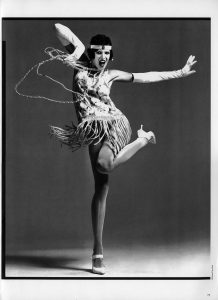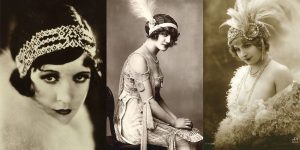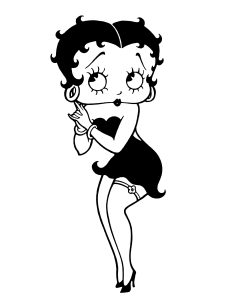FLAPPERS
By Kaja Ramšak
The roaring twenties was quite an interesting era. New things were invented, feminism was on a rise, women got the right to vote, and it was the period of economic prosperity. Besides that, flappers appeared.
Who were flappers?
 If we look up a dictionary a flapper is defined as a young woman, especially one in the 1920s who showed disdain for conventional dress and behaviour.
If we look up a dictionary a flapper is defined as a young woman, especially one in the 1920s who showed disdain for conventional dress and behaviour.
Yes, they have brought some changes and the world did not like it. It all started at the very beginning of 1st World War in 1914. Men were called to the war and women stayed home. Before the war they were only considered as housewives and mothers. After men had left, they needed to take over their jobs and soon realised they are capable of doing way more than just cooking and cleaning. So after the war had ended they became more independent and stood up to men. They wanted to be as free as they were before and the only way they could have done that was to try and behave as men did.
They started to drink, sing and party until late at night. They went to speakeasies (an illicit establishment that sold alcoholic drinks) and had fun dancing charlestone (a popular dance in the 1920s) all night.
Flappers were recognisable due to their fashion style. When it came to a flapper, a perfect dress, and makeup on point were one of the most important things. They always wore red lipstick, and a ‘flapping dress’ which showed slim figures and non-curved body type. Trousers were a no-go and the same thing was meant for shoes without heels. On the other hand, headbands were really important because they represented the personality of each individual. More colourful the headband, more easy-going person. Behind the dress, a garter was hidden. It held a flask, usually filled with rum or whisky, for when the alcohol was out of reach.
But not just the fashion and behaviour made a difference between women. Flappers used a special slang, which was mostly used during ‘drinking hours’ and also on the street, when they did not want it to be understood. They had a lot of slang words prepared for when they were drunk. For example: jazzed, corked, potted, embabled. “I have to see a man about a dog” really meant “I am going to buy some whisky”.
One of the most known flappers today is actually a cartoon character – Betty Bopp. She was described in a 1934 court case as: “Combining in appearance the childish with the sophisticated—a large round baby face with big eyes and a nose like a button, framed in a somewhat careful coiffure, with a very small body of which perhaps the leading characteristic is the most self-confident little bust imaginable”. Besides being cancelled due to too much sexualised scenes, Betty Bopp is still today one of the most known animated characters all around the world. She also became one of the first animated sex symbols, after an episode ‘Minnie the Moocher’ became one of the most famous series of a little Jazz age flapper.
Flappers were considered as quite a challenge, due to traditional Victorian roles which said that a woman should stay at home, be loyal, take care of children and house and of course – go to church. In this manner, flappers were a result of larger social changes, they represented a ‘cultural war’ but something needed to be changed in the society that they lived in so we can all be grateful to them.
The flapper lifestyle and look disappeared after the Wall Street crashed and the Great Depression followed. Flappers behaviour wasn’t considered acceptable anymore, so that is how the end of the flapper era started.


